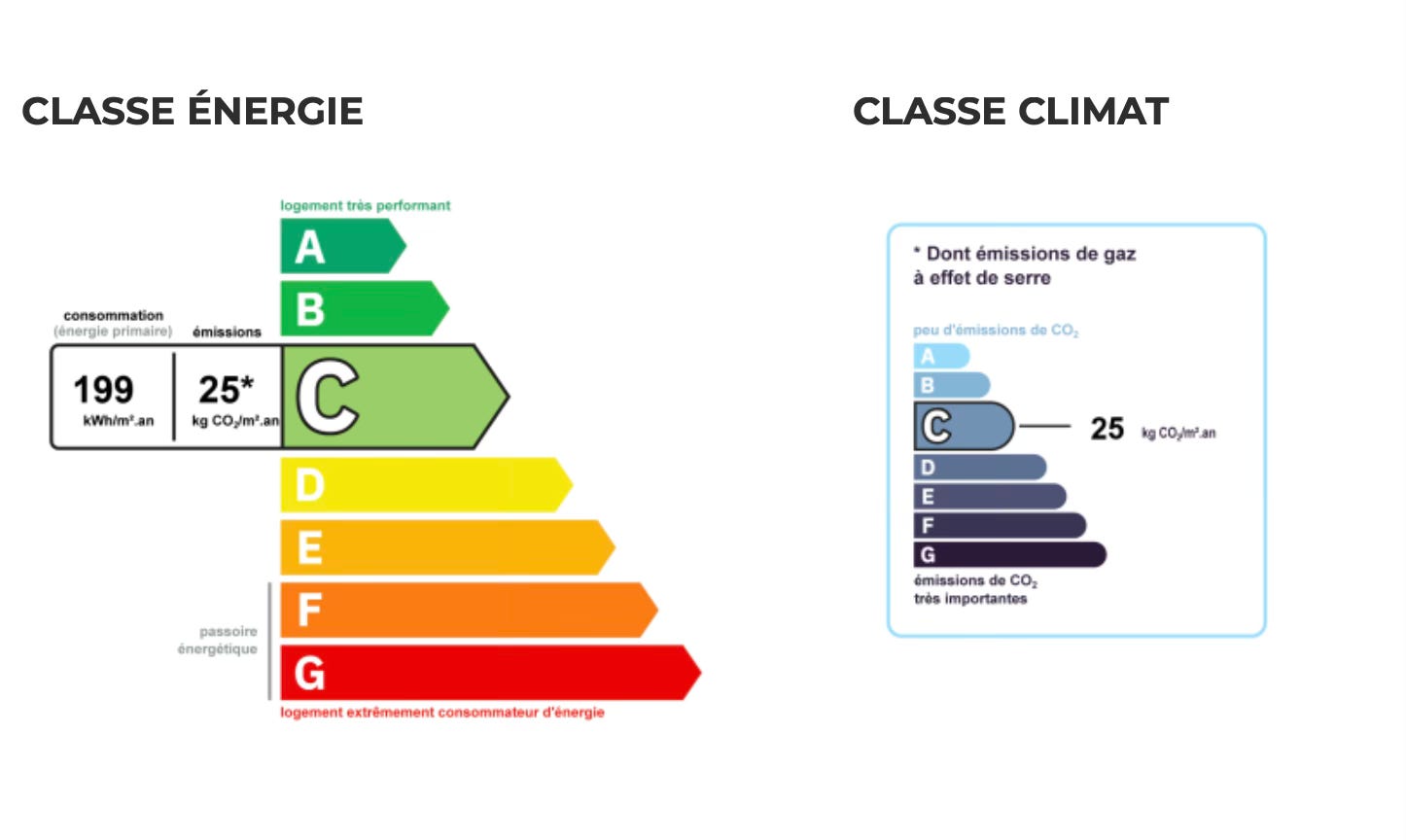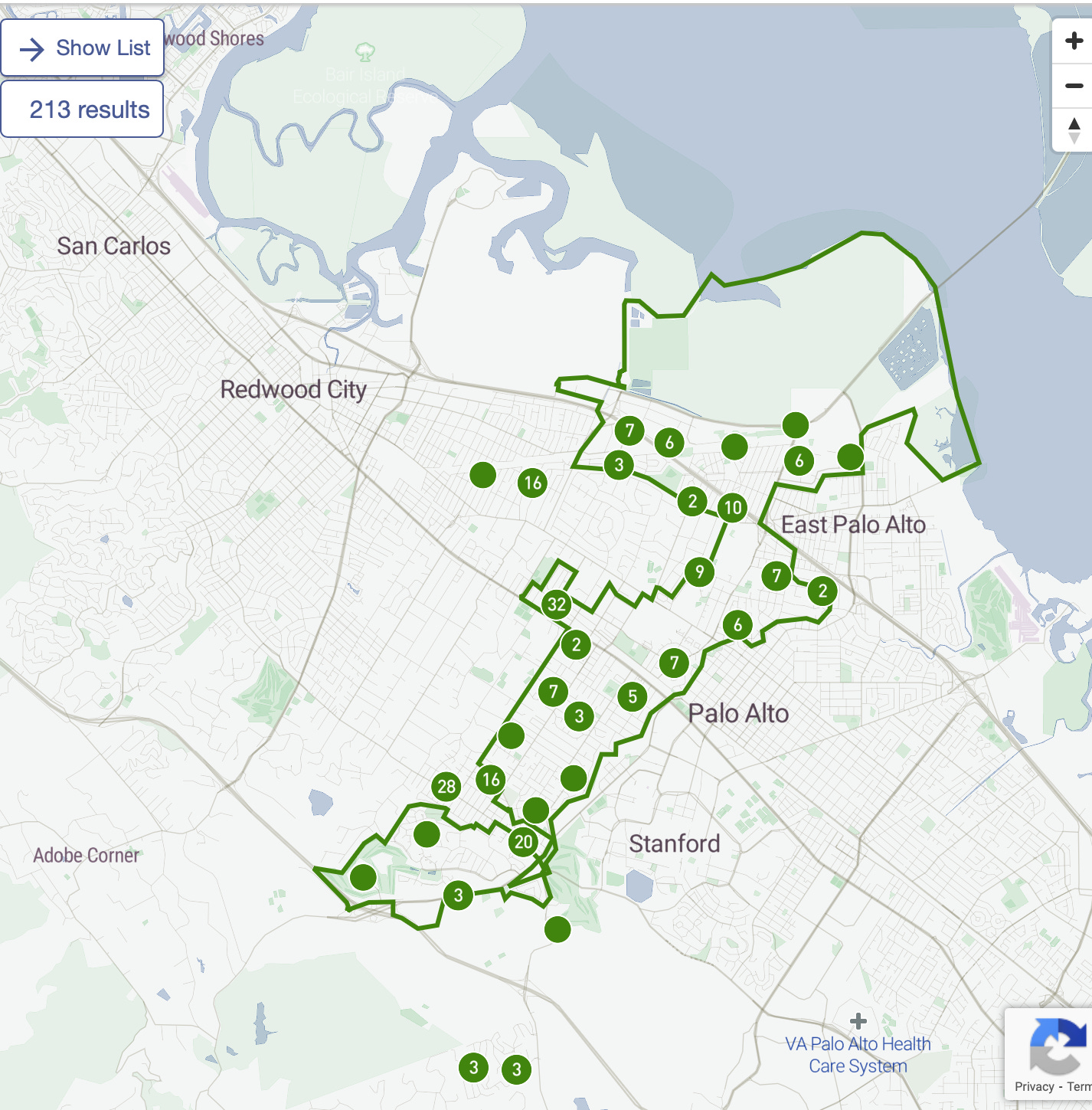Home Energy Labels in California
Improving the Energy Efficiency of Existing Buildings
What are Energy Labels
Recently I visited Barcelona and Paris and did some window shopping while walking around the cities. All the properties I saw advertised in the street displays included labels like this one:
This label provides an indication of the quality of the energy consumption of the property (199 kWh/m2.year) and its contribution in Green House Gasses (25 kg CO2/m2.year). The intention of the label is twofold: provide information to the buyer/renter, and encourage the seller/landowner to upgrade the property over time.
Energy Labels
Household energy labels were introduced in Europe in 1994 and the labels are well understood and appreciated. Building energy labels use the same concept, but applied to buildings.
The European Energy Performance of Buildings Directive (EPBD) was first published in 2002. In the current version, all buildings currently being sold, or rented, must have a label. The labels depend only on the assets of the property, not the actual usage and the labels are independent of the size of the property: everything else being the same, a larger property (with more m2) will consume more energy than a smaller property with the same label.
Existing Buildings
Building energy labels apply to existing housing stock. Improving the energy efficiency of old buildings is critical as existing buildings in Europe account for:
> 40% of Energy Consumed
> 36% of Energy-related GHG emissions
> 70% of EU buildings are not energy efficient
> 85-95% of EU buildings are expected to still be standing by 2050
The labels are a way to raise awareness of the properties of the building stock, and encourage, and eventually force, energy efficiency improvements.
The European plan is for all properties to be required to achieve some minimum quality at some point in the future.
Multiple Benefits
Improved buildings yield big benefits to our society: they reduce our energy consumption and reduce our contribution to the climate crisis. Improved buildings also have benefits to the users of the buildings: reduced energy costs, a healthier inside air, and more comfortable houses. Additionally, the experience in several markets also point to higher value of the properties with better energy scores (see below).
What is a successful building energy label?
A successful building energy label must be easy to generate, easy to understand, consistent, accurate, and ubiquitous. It needs to address the needs of buyers and renters but also those of sellers and landlords, and real estate agents and online real state services.
The system seems to be working in Europe. It is very visible in physical sites - my sightseeing experience - and in online selling sites - check the last slide in this random Barcelona offering in Idealista.
Here in California, I should be able to point my browser to Zillow and I should see the energy label of any property being sold/rented, I should be able to understand what it means, and trust it is correct. And if I go to an open house, the brochure should have the same information. Neither is the case today in most of California.
House Energy Labels in California
The California Energy Commission has an existing Home Energy Rating System (HERS) but it needs updating to be truly useful. To accomplish this, the CEC has started a new multi-year program that includes a pre-rulemaking phase and a formal rulemaking phase:
April 2024 Workshop
The CEC held two pre-rulemaking workshops last year on this program. I listened to the first one, in April 2024. It was outstanding and prompted me to write this post.
Key links
Structure of the Workshop
The workshop covered
An introduction by Commissioner McAllister
[6 min into the recording]Background and context material by Cheng Moua, CEC staff
[14m into the recording and Slide 7 in the deck]Experience in Denmark, by Kaj Isaksen
[1h 14m into the recording and Slide 27 in the deck]A perspective from the real state industry, by Cynthia Adams
[2h 13m into the recording and Slide 47 in the deck]Plus public comments after each presentation and at the end of the event.
[3h into the recording]
Below is a quick fly-by of the presentations.
Introduction by Commissioner McAllister
I always enjoy listening to Commissioner McAllister; this case was no exception. Below are some notes:
We are at the pre-rule making stage and any and all comments are valid.
We want to learn from the Danish program. It is simple, clear and pervasive, and very successful.
Labels create value when buying / selling a building/property
CEC has not pursued a time-of-sale label because we don’t currently have a good, up-to-date, rating system for new and existing buildings.
Real estate agents are key to the program. Their duty when selling the property is to try to make the property look as good as possible but, if the building is low performing, a conflict arises. A regulatory entity, like the CEC, can help overcome this tension, creating a transparent yardstick for all buildings.
We want to create a level playing field for new and existing buildings
We want to enable people to understand how to improve their buildings when they buy it
We need to think about how to develop this system so that it really works out. There is as reasonably low cost as as we can can get it. But also effective and repeatable and transparent.
Context and Background
Cheng Moua, from CEC, provided context and background, including explaining why the CEC has the authority to tackle the problem, some summary of the comments received so far, the scope of the proceeding, and the roadmap for the process, including milestones.
The original HERS program was created in 1999 and it was updated in 2008, but it currently is out of date. The update process started late 2023. The major activites to date are
Oct ‘23: CEC approved an Order Instituting Rulemaking to update the program
Nov ‘23 - Ongoing: Staff outreach and meetings with stakeholders
Dec ‘23-Feb ‘24: Staff released a request for information soliciting comments
Leveraging existing programs
The new effort will leverage the experience in other markets; in addition to Europe, other examples include:
The USA’s Energy Star (started in 1992)
Australia’s Nationwide House Energy Rating Schema - they recently had their first trial of existing houses
Canada’s EnerGuide
Multiple locations in the US
Before the CEC presentation I only knew of one city with a home label program, Portland, OR, but there are multiple examples, including NY City, Vermont, Austin, TX, Berkeley, CA, and BayREN (Bay Area Regional Energy Network).
Different jurisdictions have different ways to calculate the label, record it, and advertise.
Green Building Registry
The Green Building Registry is a software-as-a-service (SaaS) and data aggregation platform that is used by many organizations. GBR is a product from Earth Advantage which started in 1992 as part of Portland General Electric and in 2005 became an independent non-profit organization.
Since the content is populated by different groups, the actual details vary a lot. The content in Portland is very good…
while the content in Menlo Park is quite sparse.
Energy Labels in Denmark
The presentation by Kaj Isaksen was extremely interesting; I fully recommend it. Below are just some key highlights.
The program in Denmark is very successful. It started in 2006. An Environmental Performance Certificate (EPC) consists of an Energy Performance Label and a tailored report with suggestions for energy-saving improvements to the building. The Energy Label is the European standard with grades from A (best) through G (worse) plus additional grades for buildings outperforming the A grade: A2010, A2015, and A2020.
An EPC is valid for 10 years. Any building for sale or rent, all new buildings, and all public buildings over 250 m2 must have a valid EPC and the EPC must be visible in advertisements for selling or renting the property.
The presentation from Mr. Isaksen covered who can issue an EPCs, how they are computed, and how their quality is preserved.
The program is very successful. Mr. Isaksen provided numbers for 2023. There were approx. 1.5 M single family houses and 650,000 of them had a valid (not expired) EPC. The number for multi-family houses was 110,000 houses with 62,000 with a valid EPC.
An EPC includes a clear description of the assets in the house and how to improve the rating
Mr. Isaksen also provided data indicating the benefits to sellers of better EPC scores. He ended showing how the ratings of the housing stock has improved over time
Check the recording and the presentation slides. Also check the Official EPC Site.
Real Estate Presentation
The presentation by Ms Adams focused on the importance to understand how real state agents work, the need to create an energy label program that works for them, and to secure their cooperation in the program. I wholeheartedly agree.
Future Steps of CEC Program
The April 2024 workshop was followed by a workshop on Sept 2024 workshop focused on calculation methods; I skimmed and I saw that it had presentations from Earth Advantage and Xerohome but I have not yet listened to it.
According to the roadmap for the program, there should be a couple more workshops by now (March 2025), but they have not happened yet. I’m keeping an eye for them.
Take Home Message
The CEC has made great progress over the years in energy efficiency and electrification on new construction, but the biggest challenge is existing buildings. A whole house energy rating and label program will make a significant difference in many markets.
Getting it right is key, though, and CEC seems to be doing a great job in that direction.
What can you do in the meantime?
A “poor-man” alternative to an energy rating and label is an asset inventory, like the fuel source inventory in Berkeley. It would be great if the seller/landlord offered this but you can ask when you are buying/renting. Here are some energy-efficiency related questions you may consider:
In new construction, what CEC code does it comply with? Key versions:
2013 - residential new construction must be PV-ready
2016 - clean-up
2019 - residential new construction must have PV
2022 - residential new construction must be battery-ready
2025 - clean-up
What is the fuel source for the main appliances? Water Heater, Dryer, HVAC, Stove…
Can methane-based appliances be upgraded to electrical ones? Is there a 240V outlet behind that large gas range?
What is the size of the electrical panel? (Although you can do a lot even with a 100A panel)
Does the house have rooftop solar? If so, size of the panels? And, is the interconnect under NEM 2.0 or NBT (NEM 3.0)?
Does the house have a battery?
Insulation is a biggie, but I doubt the real estate vendor will know
Have fun with the answers!








